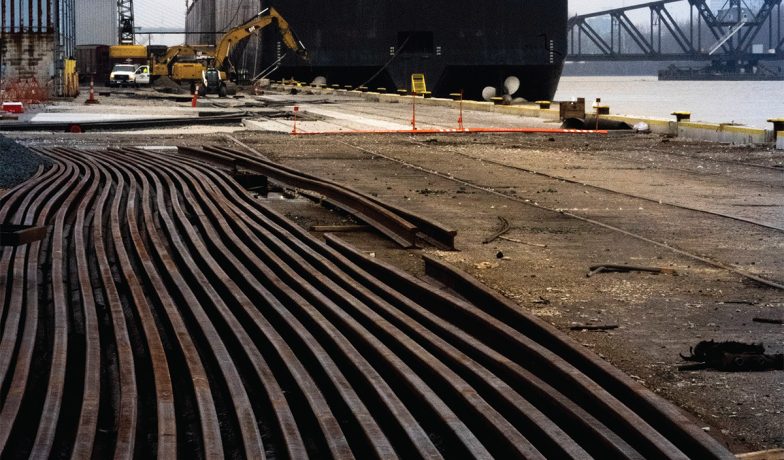Great Lakes ports show steady growth at the start of 2024 shipping season
Proving its worth
Movement of cargo on the Great Lakes-St. Lawrence Seaway System is booming thanks to an early start to the shipping season. The 66th navigation season began March 22 with the opening of the St. Lawrence Seaway. The early start to the 2024 season follows one of the longest shipping seasons on record in 2023. Last season, nearly 38 million metric tons of goods transited the Great Lakes-St. Lawrence Seaway System.
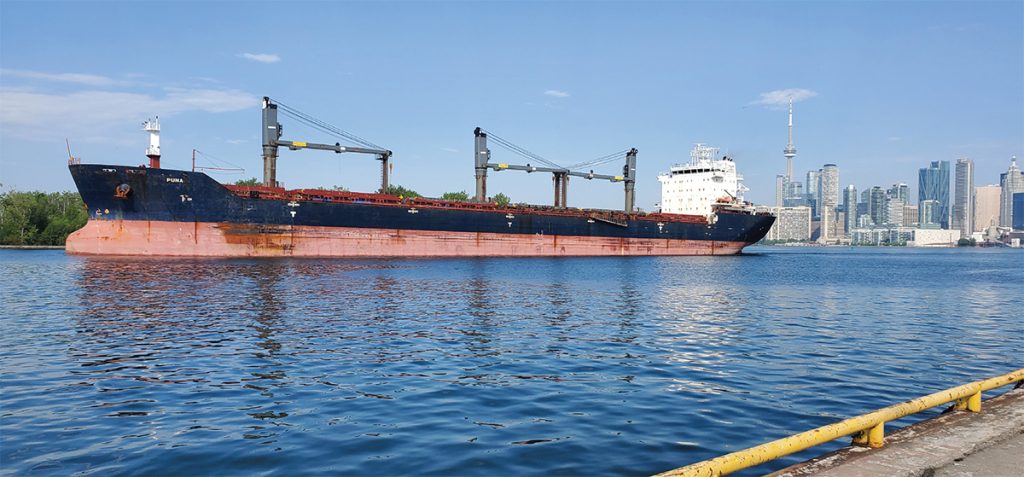
“It was the longest international shipping season in port history and one of our port’s longest Great Lakes navigation seasons as well,” said Deb DeLuca, executive director of the Duluth Seaway Port Authority. “It was great to see that extension of commerce and supply chain viability on this valuable binational waterway.”
Great Lakes ports expect increased shipments in commodities and goods across many sectors this season. According to the Lake Carriers’ Association, shipments of limestone on the Great Lakes totaled 2.08 million metric tons in April, a 19.9 percent increase compared to one year ago. March shipments of iron ore on the Great Lakes totaled nearly 1.5 million metric tons, a 25.5 percent increase compared to one year ago.
Port Investments
This year, one of Illinois International Port District’s (IIP D) main exports out of the Port of Chicago will be carbon-free steel made in the United States. The port welcomed the Wagenborg m/v Beatrix on April 5, its first international vessel of the 2024 shipping season. The m/v Beatrix was carrying imported steel from Europe, which is primarily used for manufacturing. Efforts to rebuild the port and attract new tenants will continue this year, with replacement of warehouse roofs, updated lighting and the reconstruction of IIP D’s through street, Butler Drive.
The Port of Detroit experienced an increase in total tonnage of 48 percent from 2022 to 2023, primarily from steel products and bulk material. New to the port last season were shipments of cement bags from Turkey. Over the next few months, the port expects an increase in volumes of steel, cement bags, aluminum and breakbulk capital equipment.
There were a few milestone achievements during the 2023 shipping season at the Port of Duluth-Superior. Spliethoff monthly liner service began last year between Duluth and Antwerp, Belgium. The new service carried a wide variety of cargoes for exports and imports, including containerized and breakbulk items. The port also welcomed its first waterborne oats shipment since 2021. The shipment arrived at the Elevator A facility in Duluth, which Hansen-Mueller purchased in 2022 and reactivated last year. Prior to the 2023 shipment, Elevator A hadn’t received a waterborne grain delivery since 1995. “With an increase in total maritime tonnage and ship arrivals, plus the reactivation of an iconic grain elevator and the launch of Duluth’s first regular trans-Atlantic liner service since the late 1970s, the 2023 navigation was a very good one for the Port of Duluth-Superior,” DeLuca said.
She said the port is looking forward to another strong season. There are a significant number of heavy-lift and project cargo arrivals scheduled for 2024, along with several infrastructure projects requiring cement shipments. Iron ore and grain shipments are also expected to remain strong this season.
Dock wall reconstruction is expected to begin soon following the September 2023 opening of the new Clure Public Marine Terminal. This new terminal brings total warehousing capacity for Duluth Cargo Connect to more than 500,000 square feet. The new construction is part of a $20.3 million project at the Clure Terminal that also includes 850 linear feet of dock wall reconstruction for two of the facility’s ship berths.
The Port of Green Bay saw tonnage levels remain steady in 2023, with 1.6 million metric tons handled at the facility, a 1 percent increase over the previous season. While the tonnage levels were similar, the number of ships that visited the Port of Green Bay
increased 7 percent, with 170 vessels moving through the port compared to 159 in 2022.
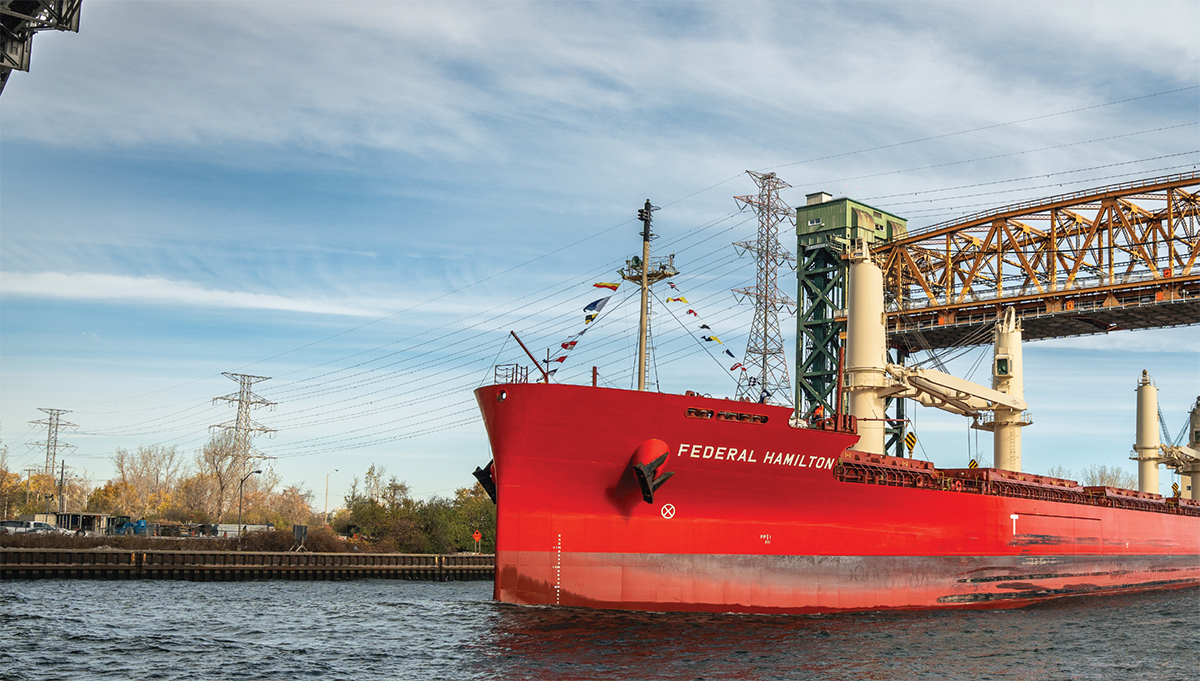
HOPA Ports is preparing to handle more agri-food commodities as construction begins this year on a new flour mill to be built by Parrish & Heimbecker and SucroCan’s new $135 million sugar refinery. Plans are also underway for a new grain export terminal at the Port of Oshawa to be ready for the upcoming fall harvest. These investments come following the 2023 navigation season, where HOPA reported a combined total cargo of 11.3 million metric tons through the ports of Hamilton and Oshawa. Steel commodities increased by 13 percent over 2022, while agri-food grew by 5 percent, representing 31 percent of total cargo moving through the ports in 2023.
Ports of Indiana-Burns Harbor remains cautiously optimistic about the current navigation season. This is despite recording its third highest total of steel cargo in the port’s more than 50-year history in 2023, with 1.4 million metric tons and the third highest overall cargo total since 2018, with 2.6 million metric tons. The port also set a new mineral record, up 20 percent over 2022, and finished major investments in dock, rail and bulk terminal expansions.
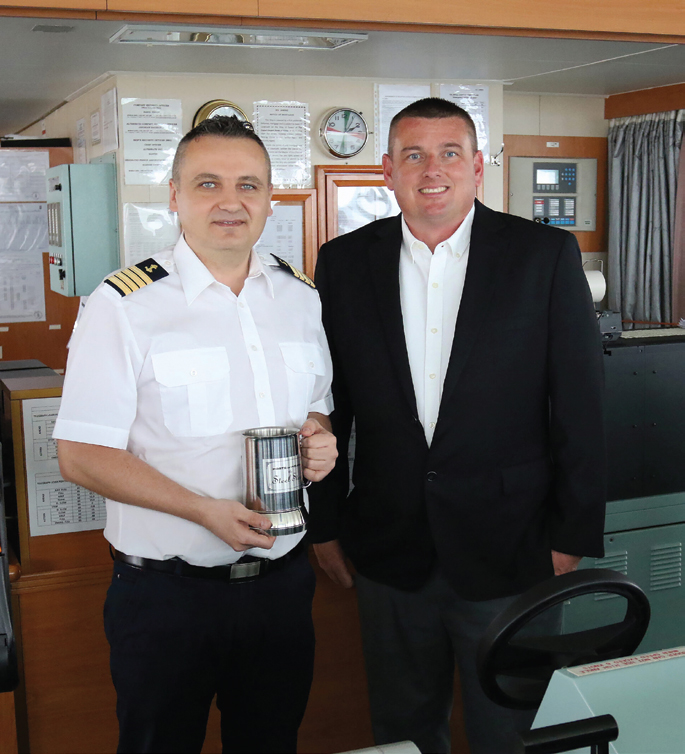
Burns Harbor opened the 2024 shipping season on April 12, with the arrival of the m/v Jamno. The bulk carrier sailed from Port of Ijmuiden, Netherlands, carrying nearly 5,600 metric tons of specialized steel products for local manufacturing. Port director Ryan McCoy presented the “Steel Stein” to Captain Dariusz Buczek to commemorate the start of the season. The stein represents northwest Indiana’s identity as “The Steel Capital of North America.”
This year, Burns Harbor expects to complete construction and begin shipments at Berths 5, 16 and 17. Berth 5 is new and will handle self-unloading vessels and provide transload capabilities directly to rail or truck. Improvements on Berths 16 and 17 on the port’s west harbor will increase dock capacity adjacent to a 35-acre parcel that is ready for new development. The port also plans to announce a new operator for the International Ag Terminal and hopes to begin construction of a new container facility pending approval of a proposal submitted to U.S. Customs & Border Protection.
The year 2023 proved to be the Port of Johnstown’s best year since the Township of Edwardsburgh Cardinal purchased the port from Ports Canada in 2020. The season started with strong steel and corn shipments, and the port processed 926,000 metric tons of grain, the most in the facility’s history. The port expects to see an upward trend of cargoes received in 2024 and is prepared to see a drop in salt this year due to the milder winter and leftover inventories.
The Port of Johnstown will be busy with infrastructure improvements this year with the addition of a $6 million grain dryer and an increase in storage capacity. The port also plans to construct an additional truck receiving pit for grain and continue with $3 million in infrastructure repair work.
Port Milwaukee anticipates 2024 to be on par with last season and in line with its five-year average. The port reported that dry bulk served as the primary cargo in 2023, making up 88 percent of the 2.35 million metric tons handled at the facility. The port handled several new commodities last season, including animal feed, soybeans, landscaping stone and pig iron. Jackie Q. Carter, port director for Port Milwaukee, said she expects liquid cargo, steel, cement and project cargos to remain steady or slightly higher in 2024 and, like the Port of Johnstown, is projecting less deliveries of salt this year due to the mild winter and anticipated higher inventory levels. Agriculture movements are projected to grow as the DeLong Agriculture Export Facility becomes fully operational. Phase II of construction at the DeLong facility is currently underway.
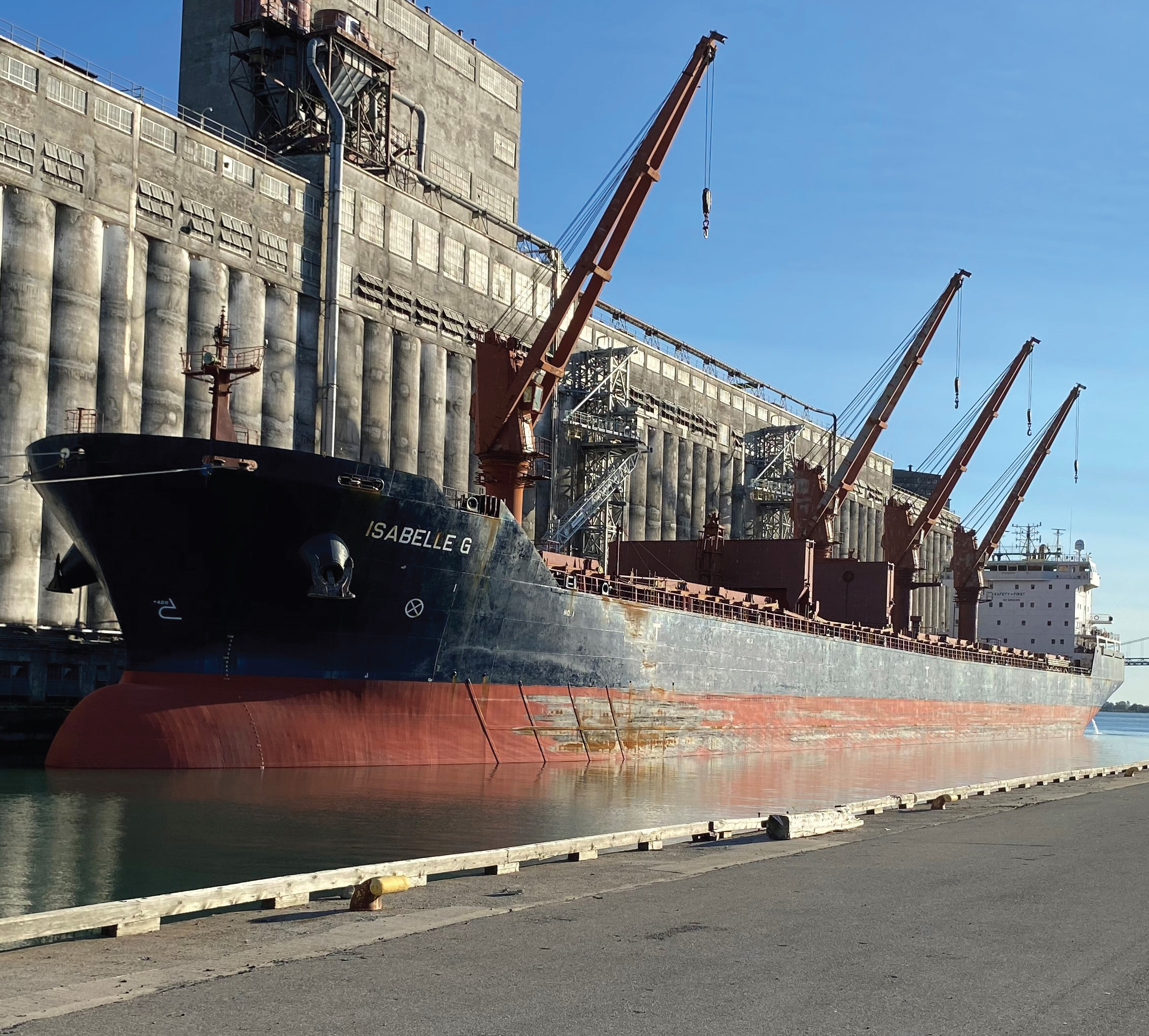
Carter said the port is moving forward with $4 million in infrastructure improvements this year, including repairs and upgrades to port terminals and buildings. The Port Administration Building envelope work and roof replacement on the truck scale house is expected to be complete in 2024. Two grant-supported projects slated for this year involve dock wall repair and security lighting and camera upgrades.
Construction and infrastructure improvements will be a top priority for the Port of Monroe this navigation season after handling 2.2 million metric tons of cargo in 2023. The port will begin construction on the Lake Erie Renewable Energy Resilience project, which was awarded $11 million through the Port Infrastructure Development Program (PI DP). The award will fund the rehabilitation of the turning basin dock and riverfront dock, the construction of a second riverfront dock and shore power infrastructure. The port will also continue to develop plans for the Michigan Maritime Gateway, which will be the first maritime container terminal in Michigan. The terminal will utilize the equipment necessary to scan and inspect international shipping containers.
Repair work is underway at the Port of Oswego’s West Terminal Pier. In addition to the nearly $4 million terminal construction project, the port was awarded $5 million in grants to purchase an all-electric rail engine and upgrade rail service at its Fitzgibbons
Intermodal Terminal. The port has also secured funds for a study by the U.S. Department of Transportation to establish the port as an Interlake container facility. The Port of Oswego had an 18 percent increase in shipping tonnage in 2023 compared to the previous year. The port expects to increase its grain ship loading speed in 2024 following the purchase of a $2 million telescoping
conveyor.
The Port of Québec has become the first western hemisphere port to obtain Biosphere certification. Biosphere is the international sustainability management and certification system of the Responsible Tourism Institute, one of the founding organizations of the Global Sustainable Tourism Council (GSTC). The Biosphere program helps destinations, businesses and organizations define and create a sustainable development plan.
Following 2023’s successful shipping season, with 27.9 million metric tons of goods transshipped, the port plans to focus on shore power this year. The Port of Québec has multiple shore power projects planned, with efforts currently underway to make the port able to accommodate several dozen cruise ships as soon as 2027.
Transport Canada recently announced plans to invest up to $6.7 million for two projects to increase capacity at the Port of Thunder Bay, which saw 9.6 million metric tons of cargo transited in 2023. Canada will contribute up to $3 million to redevelop the existing marshalling yard at the Ports Keefer Terminal. An additional $3.7 million will be contributed to help upgrade the wharf at Keefer Terminal. This will include expanding the terminal’s cargo laydown area, developing the electrical infrastructure for the new area and improving the rail crossing infrastructure.
The Toledo-Lucas County Port Authority has multiple infrastructure improvements scheduled for 2024 following last year’s successful navigation season. The Port of Toledo handled 10.6 million metric tons, the highest tonnage the seaport has seen since 2007. The port experienced an increase in liquid bulk through its facility mainly due to resuming operations at the Cenovus Toledo Refinery, and it also began to ship out some of the residual iron oxide from the Cleveland Cliffs DRI plant.
Port officials expect the 2024 season to be on par with last year. They are hopeful to see an increase in overseas vessel calls and expect grain exports to return to levels consistent with the last several years prior to 2023.
The port is using $30 million of state and federal funds and local investment to reconstruct and upgrade the dock wall at the General Cargo Dock, operated by Midwest Terminals of Toledo, and is constructing a new liquid bulk transloading facility. The port also plans
to invest approximately $5 million to construct a new warehouse at Midwest Terminals, adjacent to the liquid tank transload facility.
The Port of Toronto expects 2024 to be another strong solid bulk cargo year and cruise ship season. The port moved more than 2.3 million metric tons of cargo and welcomed a record 45 cruise ships and nearly 18,000 visitors to its cruise ship terminal in 2023.
“The Port of Toronto is part of an environmentally sustainable marine transportation corridor through the Great Lakes-St. Lawrence Seaway and facilitates the movement of goods and people through Canada’s largest city,” said RJ Steenstra, president and CEO of PortsToronto. “Over and above the port’s significant economic impact, generating more than $460 million in economic activity in Ontario, the tonnage delivered to the port by ship last year took approximately 57,000, 40-metric ton trucks off Toronto’s congested roads and highways.”
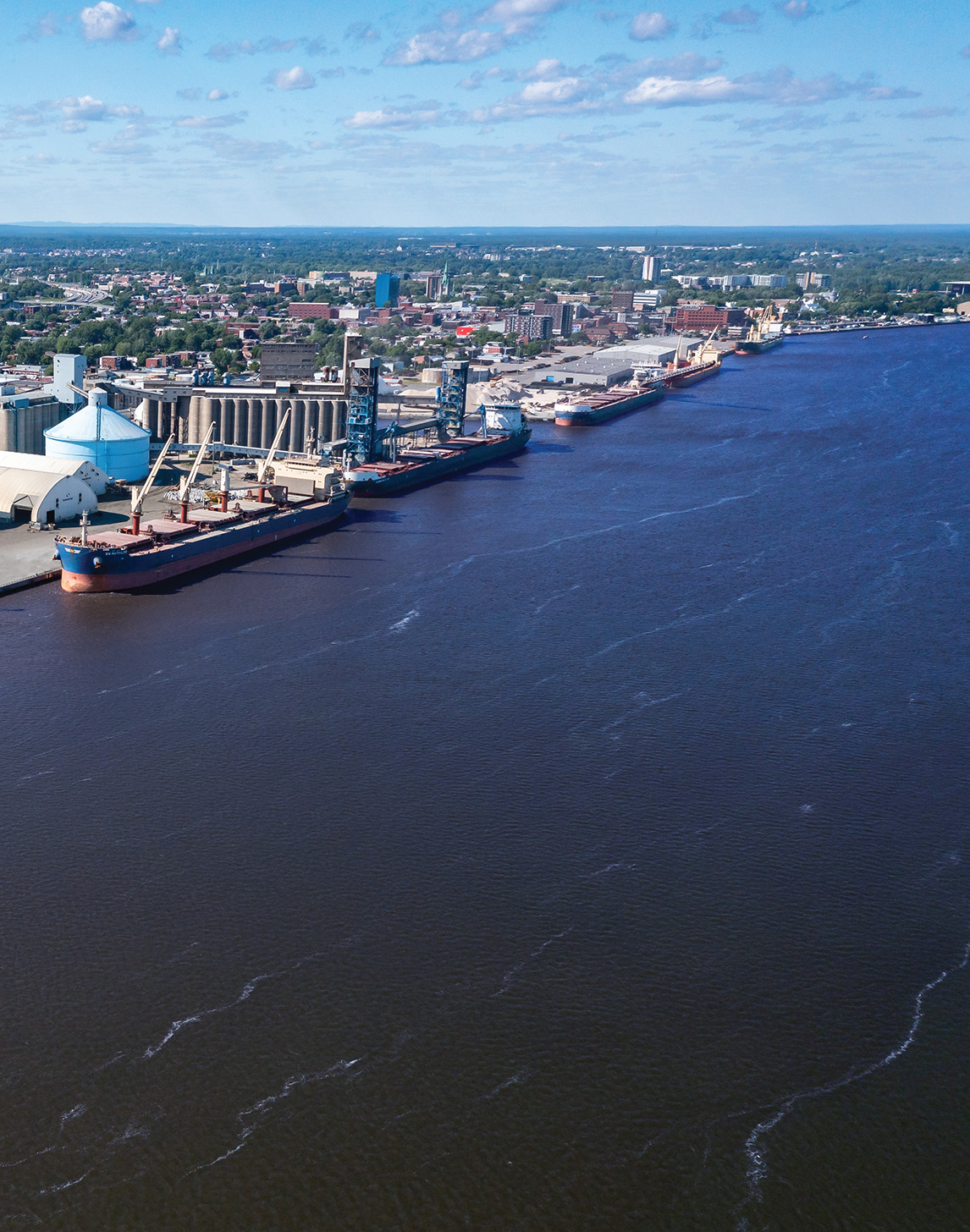
Since the port is at full capacity, the Port of Trois-Rivières expects seaway traffic to remain stable in 2024 for the second year in a row. In 2023, 4.2 million metric tons of goods transited through the port, compared with 4.3 million metric tons in 2022. Efforts to increase capacity at the port are underway. In 2023, the port developed engineering plans to reconstruct Pier 17 and construct its new Pier 16. This major project, with construction expected to begin this year, will refurbish the wharf infrastructure and enable the installation of new handling equipment with improved environmental, operational and energy performance.
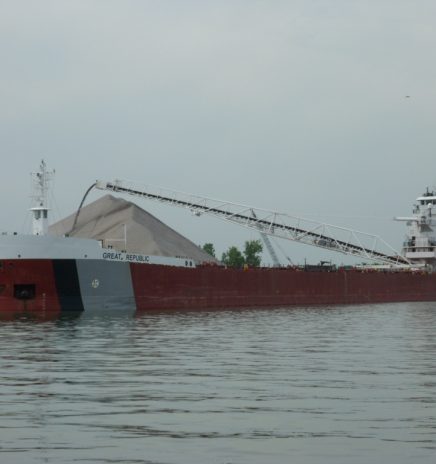
Limestone and Iron Ore Trade Down on the Great Lakes in November
The Lake Carriers’ Association reports that shipments of limestone on the Great Lakes totaled 2.4 million tons in November, a decrease of 18.1% compared to 2024. Limestone cargos were also... Read More
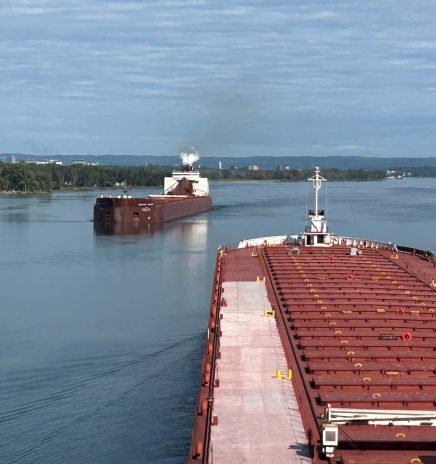
Great Lakes Iron Ore and Limestone Trade Down in October
The Lake Carriers’ Association reports shipments of iron ore on the Great Lakes totaled 4.4 million tons in October, a decrease of 1.3% compared to 2024. Shipments were 8% below... Read More

